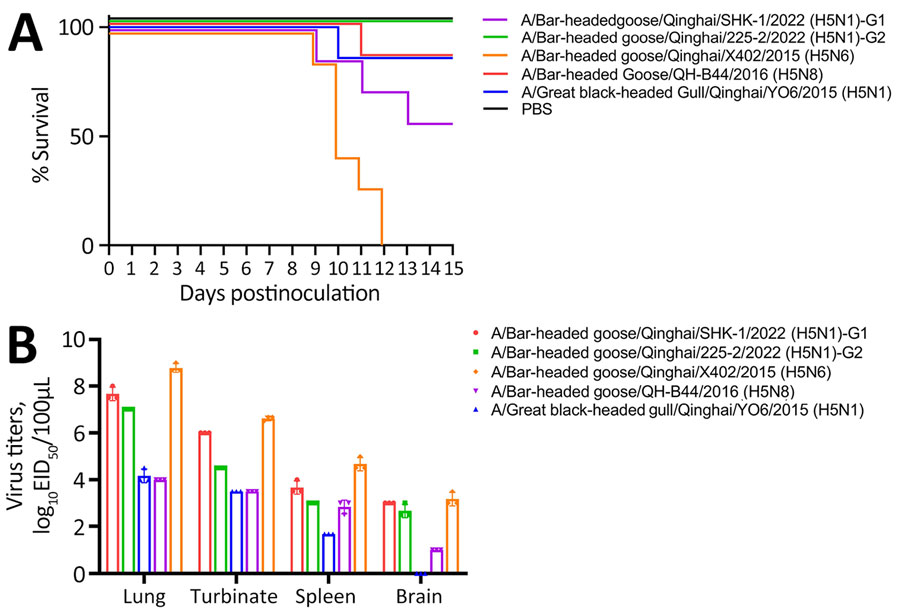Volume 30, Number 10—October 2024
Dispatch
Highly Pathogenic Avian Influenza A Virus in Wild Migratory Birds, Qinghai Lake, China, 2022
Figure 4

Figure 4. Mouse models of replication and pathogenicity of highly pathogenic H5 avian influenza viruses isolated from wild birds at Qinghai Lake, China. Each group of mice was inoculated intranasally at a dose of 106 EID50 of H5N1 (3 strains), H5N8, and H5N6 viruses. Mice in the control group were inoculated with PBS. A) Kaplan–Meier survival curve. B) Organ viral titers determined at 3 days postinoculation by measuring EID50 in organ tissue from infected mice. Three mice from each group were euthanized for organ tissue collection. EID50, 50% egg infectious dose; PBS, phosphate-buffered saline.
1These authors contributed equally to this article.
Page created: August 16, 2024
Page updated: September 23, 2024
Page reviewed: September 23, 2024
The conclusions, findings, and opinions expressed by authors contributing to this journal do not necessarily reflect the official position of the U.S. Department of Health and Human Services, the Public Health Service, the Centers for Disease Control and Prevention, or the authors' affiliated institutions. Use of trade names is for identification only and does not imply endorsement by any of the groups named above.